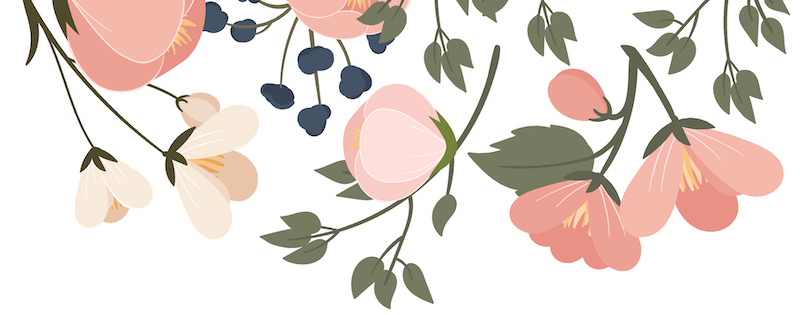Simply Spray Soft Fabric & Upholstery Paint
My friend, Stefani Girard, recently did some reviews and tutorials using the
Simply Spray "
Soft Fabric &
Upholstery" paints on her blogs. She had some extra paint available and gave it to me to test it and see how it worked for me. I had six colors to work with and decided to give them a try. The Simply Spray line is specifically created for painting on textiles. They have smaller can for t-shirts, and offer a larger size can for larger projects like a chair or something similar.
Stef wrote a fun tutorial on one of her blogs on how to transform a plain tank top into a fun "Fourth
of July" themed top. Another posts was on how to upcycle an
old purse using the upholstery paint sprays. I have embedded the links so you can take a look at them and see some of the projects that she used the sprays on.
Before I got started, I asked Stef what she liked about the product and she told me it was that the fabric paint sinks into the textile, instead of just sitting on top. So if you paint it onto a textured fabric, you will still be able to see the texture. She also mentioned that the paint dries soft which makes it great for t-shirts and such.
That being said, I decided to do a few of my own tests to see how the paint performs for me. I covered my table surface with a puppy training pad because I wanted it to soak up the over spray. I felt that if I used a plain plastic cover then the paint would stay on the surface (it is made for porous materials and not plastic) and might get unintentionally get onto my projects.
I did a few tests on various bits paper, fabric, etc., and which came out good. The instructions say to start away from the project and spray into it (it that makes sense....it is a sweeping motion). If you do not do that then you will get results like the piece below.
The paint squirted and left splotches of paint in certain areas. So unless you are trying to achieve that type of look, remember to use a sweeping motion and start off the project itself. Now, the paint did stay
wet long enough for me to grab a brush to blend the paint out. So if you forget and end with splotches you can fix them by working quickly. The paint is created for 100% cotton, however, mostly everything I want to recycle is some type of blend.
So I decided to test it on a cotton and polyester blend flower. I sprayed the paint on. I wanted a more textured look, so I made sure not to saturate the color onto the flower so I would have some of the old color show through. Once the flower was dry, I added a cute button to the center of the flower for an accent. It worked great on the polyester bits and the blended fabric parts. I did get some paint on my hands but it washed off quite easily.
My daughter needed a girly pirate hat for a party, so I decided to test out the spray on a straw hat to see how it would perform. I picked up an ordinary straw hat at the local bargain store, then I lightly sanded various areas of the hat. Then I hot glued the flaps up, to hold them until I could secure the flaps in place with thread.
I purposely did not paint the hat first, because I did not want the hat to look brand new. I knew I could achieve an easy weathered look just by spraying the paint on at various angles.
I would spray an area and let it dry.
For areas that I wanted to look a little darker blue, I just layered the paint until I achieved the color intensity that I was looking for.
I found that I did need to let it dry between coats because the hat must have had some residual coating that was keeping the paint from soaking into the straw. By letting it dry between coats, the paint was finally able to soak into the straw. After I finished painting the hat and had let it set for 72 hours, I added some fabric
 |
| Pirate Hat painted with the Simply Spray Fabric Paint |
trim and other accents to the hat to complete the look my daughter wanted.
Lately, I am really enjoying the fabulous altered books that my friends have made. I thought these paints would be fun to test out on a fabric covered book and see how it performs. So I picked a color and started to spray. I had forgotten to clean the nozzle that last time I used the blue, so that is why you see
the paint coming out all blotchy. I used a paint brush to even the paint out and remove my mistake.
I liked the look of the blue paint over the mauve, and decided to paint the edges of the pages. Since they were beige, the blue should be brighter than on the mauve.
Reminder: it is a really good idea to clean the nozzle after each use. Also don't forget to shake the can before spraying the color or you will get a splat of color like I did below.
I used a paint brush to fix my little mistake and to spread the excess paint long the edges of the book.
I also painted a few of the pages inside of the book.
In case you were wondering, the paint will bleed through the paper to the other side. Especially if you are heavy handed with the paint, like I am. Since I will eventually cover that side of the page with ephemera, it really does not matter if the paint bleeds through or not.
I painted the outside corners of the cover of this book with a little bit of gold paint to create a frame.
To finish the outside of the book, I used a cute card that I picked up at Trader Joe's and glued it to the cover. Then I added some gold tone chain to frame the card. It still looked a bit plain, so I glued on some rhinestones, buttons, and other ephemera. I like skulls and happen to have fun little skull charm that I could attach to the chain to finish it off.
One of the things that I like about this paint is that I can control how intense I want the color to be. I also can control how much coverage I want. I wanted the old title to show through on the spine of this book. So I was very light handed with the paint on the spine. As you can, the the old title is clearly visible beneath the coat of paint. This was important to me because title itself was stamped in gold mica and I did not want lose any of the shiny finish from the original lettering.

Overall, I really liked these paints. They are significantly easier to use than traditional dying techniques and the clean up is quick. The Simply Spray paint colors are nice and it does live up to its promise on quality and ease of use. There a lot of different techniques that can be used to paint items with this paint, just do a search on YouTube or Google to see what other people are doing with this great paint. The potential for these paints is unlimited and I could easily get carried away painting various surfaces and textiles with these paints.
Pros
- I can control the intensity of the colors.
- The paint can be applied sheer enough to allow the texture of the fabric to show through.
- There was no over powering scent from the paint, like I find with some other products.
- The paint dries soft and will not leave behind that weird crusty finish that some paints do.
- The paint does not require heat setting, just allow it to cure for the required 72 hours.
- Clean up is very easy.
- The paint dries quickly.
- It is non-toxic which is important to me
- Another great product that is made in the USA
Tips:
- You need to clean the "Nozzle". If you do not remember to clean the nozzle then you run the risk of having bits of paint dry in it and then the paint will not come out evenly.
- It is an Aerosol can and should be shook before beginning to paint. If you don't then the paint comes out in a bit of a messy splotch.
- The instructions tell you to clean the nozzle when you are finished painting. If you do not clean it, then any residual paint left on the nozzle will dry and block the paint from coming out. It is easy to fix by using a wet tooth pick and some baby wipes to gently remove the paint from the nozzle.

The Simply Spray website does have a fact sheet that answers some questions on how to utilize the product to its best potential. They suggest allowing the project to dry for 72 hours to give the paint a chance to set permanently. Don't forget to shake the can before each use. Also, It would be wise to cover your working surface to protect it. I did try the paint on a hard plastic surface. It has been a couple of weeks and the paint has still not come off. I also tested it on concrete and had similar results. Again, the spray can specifically says it is permanent on porous surfaces which plastic is not. However, it is better to be safe than sorry and cover your work surfaces while you paint.
Disclaimer













































